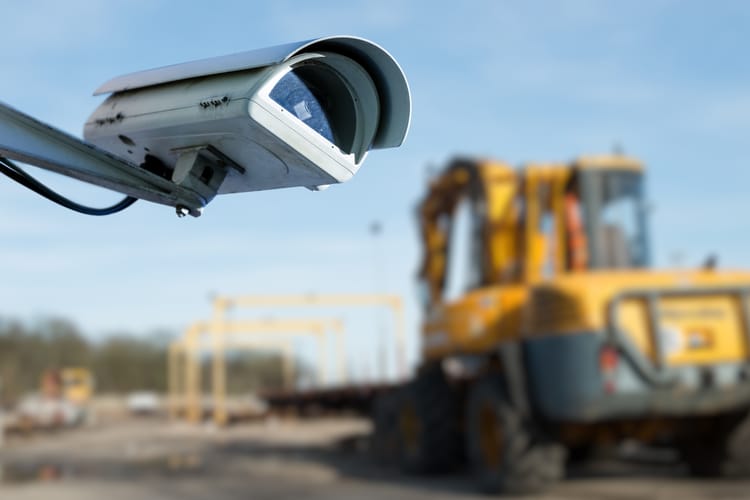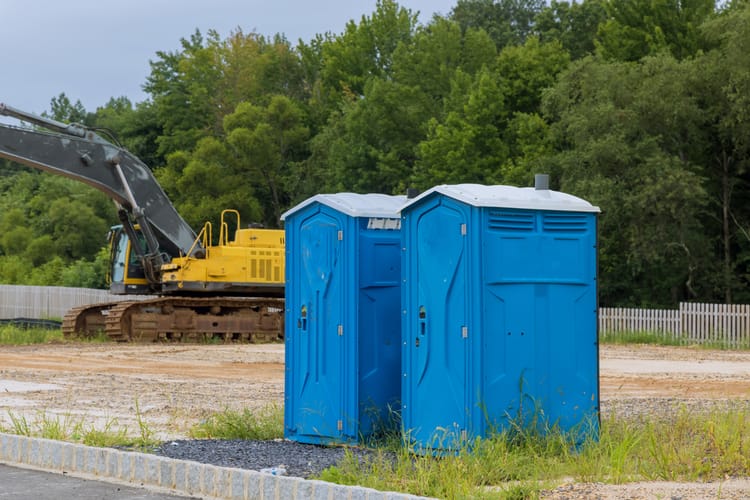Ignoring climate risk could cost you

With summer underway, now’s the time to look ahead. From climate-ready construction to smarter supply chains and workforce upskilling, this issue offers insights to help teams stay ahead. Plus: what outdoor upgrades are topping homeowner wish lists, and a standout stop if you're headed to D.C.

>> Trapped by wildfire. Canadian construction workers took shelter in a metal shipping container after fast-moving flames surrounded their site. All escaped safely.
>> It’s a family affair. If you’re visiting our nation’s capital this summer, take the fam to the National Building Museum—it's fascinating fun for all ages.
>> Raise the roof. Watching Shane Stevens (@TheThatchingGuy) build a roof is part how-to, part ASMR.
>> Meet me in the Sensory Maze. Playgrounds are so last year. Play plazas are where it’s at now. Check out the newest and largest one in the Southeast.
>> Count me in! Plumbing and electrical contractors will appreciate this Redditor’s purpose-built free web-based calculators.

'Thinking beyond ribbon-cutting to resilience... is critical'
Though June marks the start of hurricane season, climate-related issues impact construction all year. Understanding the connections between weather, climate and your company helps reduce risk and business interruption. We asked Dr. Jeremy R. Porter, head of climate implications research at First Street, what you need to know to manage current and future climate realities. —Margot Lester
Why should construction pros devote focus to climate issues?
Because climate risk is a multiplier. It doesn’t replace other risks, it amplifies them. Labor shortages become more acute during extreme heat. Material costs spike when disasters disrupt supply chains. If climate isn’t factored into strategic planning today, it will be the hidden driver behind tomorrow’s project delays and cost overruns.
Climate risk is no longer a distant or abstract concern; it’s materially affecting insurance costs, financing terms, supply chains and project viability. For construction firms, especially those operating on thinner margins, climate-linked disruptions like flooding, extreme heat or wildfire smoke can delay builds, drive up costs or even derail projects altogether. Ignoring it puts a firm at serious financial risk.
What's a frequently overlooked climate impact we should watch?
The impact on long-term asset value. A building might be code-compliant and insurable today, but if it's located in an area with rising flood, wind or fire risk, its market value and insurability may deteriorate rapidly. This impacts not only the client’s financials but also your reputation and future opportunities. Thinking beyond ribbon-cutting to resilience and longevity is critical.
How can we reduce exposure to climate-related financial risk?
Build for future climate, not just past weather. Start integrating climate data into site selection, project planning and risk assessments. There are now tools, like those provided by First Street, that allow you to assess future flood, heat and fire exposure at the parcel level. Use future climate projections when selecting materials and engineering solutions, too. If you’re bidding on a project or investing in new infrastructure, this kind of foresight can protect your bottom line. Also conduct a climate risk audit across your portfolio or pipeline [to] identify which current or upcoming projects are in areas with high climate exposure.
Anything else we should know?
Climate risk isn't going anywhere and a regulatory shift is coming at some point. Investors, insurers and government agencies are increasingly requiring disclosure of climate-related financial risks. Construction firms that can demonstrate foresight and climate resilience will be better positioned for contracts, funding and long-term partnerships. It’s not just about risk mitigation, it’s also about competitive advantage.
Are you a contractor with something to say? Email us to be considered for a future Spotlight!

How resilient is your supply chain?
One enduring lesson from the COVID pandemic was how weak supply chains are. Since then, contractors have tried to strengthen them with redundancy and local vendors. But the distractions and uncertainty that began in 2024 and multiplied this year have hampered efforts.
This factors into why a majority (79%) of businesses responding to a recent Sage survey reported little or no confidence in their ability to deal with supply chain issues. The sentiment, according to Rodney Manzo, the company’s senior director of global operations, “is an extreme shift year over year.”
Contractors can build confidence and resilience with a new approach to supply chain planning (SCP), Gartner analysts suggest. Unlike traditional SCP, probabilistic planning games out potential forecasts to help you explore options and make wiser decisions. Vital to this approach is dynamic digital scenario planning, which uses technology to run through multiple variables, identify connections and reveal risks and opportunities you can plan for and manage.
Why it matters: When your supply chain is more resilient, your business is better able to navigate changing conditions and mitigate disruptions. You can keep projects on track, avoid late fees and fines, and improve productivity and profitability. (Gartner)
Avoid this mistake when planning for upskilling
As practices evolve and technologies emerge, keeping crews appropriately trained is mission-critical. The pace of change is exacerbated by the ongoing shortage of skilled workers. Upskilling empowers you to train for the skills you need with the employees you already have.
What often gets overlooked during planning, however, is the people. Designing an effective program requires thinking about what’s in it for the crew. Start by creating a narrative that explains how upskilling benefits them. These upsides include higher wages, increased safety, opportunities for advancement and better sustainability for the company. You can motivate crew members to seek out and enroll in education and training with incentives like paid time for learning, extra PTO or pay upgrades. Finally, acknowledge those workers who lead the way with recognition and small rewards like gift cards.
Why it matters: Investing in people delivers stronger ROI and a significant competitive advantage in the form of a stable and skilled workforce. When employees understand the value of training and education, they’re more likely to participate and remain with your company. (ForConstructionPros)
Homeowners want more than outdoor kitchens
With longer days ahead and the threat of financial issues prompting canceled or limited vacations, more people are turning their attention to upgrades at home. A May survey by Angi found outdoor improvements were among residential customers’ top three project desires, outpaced only by perennial favorites, kitchens and bathrooms. Fixr’s 2025 Outdoor Living Trends Report reveals homeowners’ keenest interests outside.
Almost one-third of contractors report increased calls for new kinds of outdoor spaces beyond kitchens and hang-out areas. One-fifth see rising demand for wellness zones, including open-air gyms, cold plunges, yoga decks, meditation platforms and nature nooks. Clients are also calling for a high sustainability factor (15%)—including drought-tolerant landscaping (62%) and other eco-friendly plantings and hardscaping—and more low- and no-maintenance materials and fixtures (27%).
Why it matters: If you already do a lot of outdoor work, capitalize on these trends in your marketing and suggest projects to clients. If you’re not, check out how these preferences play out in your area to see if a market opportunity for these projects exists. (Builder)

>> Resilient Residences: Alabama offers grants and insurance discounts
>> Budget Bill: House OKs bill eliminating HVAC incentives
>> Sales Strategy: What to do now if you’re thinking of selling your firm
>> Workforce Woes: ICE raids Florida construction site

“The tech-savvy, younger generation… jumped in—many of them on their own accord—and ferreted out opportunities to support the industry, but they can’t do it without us. And now we can’t do it without them. So it’s a great perfect storm of knowledge transfer—and it needs to happen now." —Pete Kobelt, Director of Mass Timber, STO Building Group
Kobelt joined Doug Kroll, director of business development at Layton Construction, and James Litwin, vice president of construction at Harbor Bay, on the "Building Conversations" podcast for a discussion of mass timber’s environmental and operational benefits. Their conversation explores barriers to adoption, including engaging, recruiting and trusting younger workers steeped in STEM. With reliance on technology growing and the workforce shrinking, adoption of innovations like mass timber requires the industry to think differently about finding new talent. Listen here.
Thanks for reading today's edition! You can reach the newsletter team at thelevel@mynewsletter.co. We enjoy hearing from you.
Interested in advertising? Email us at newslettersales@mvfglobal.com
Was this email forwarded to you? Sign up here to get this newsletter once a week.
The Level is written by Margot Lester and edited by Bianca Prieto.





